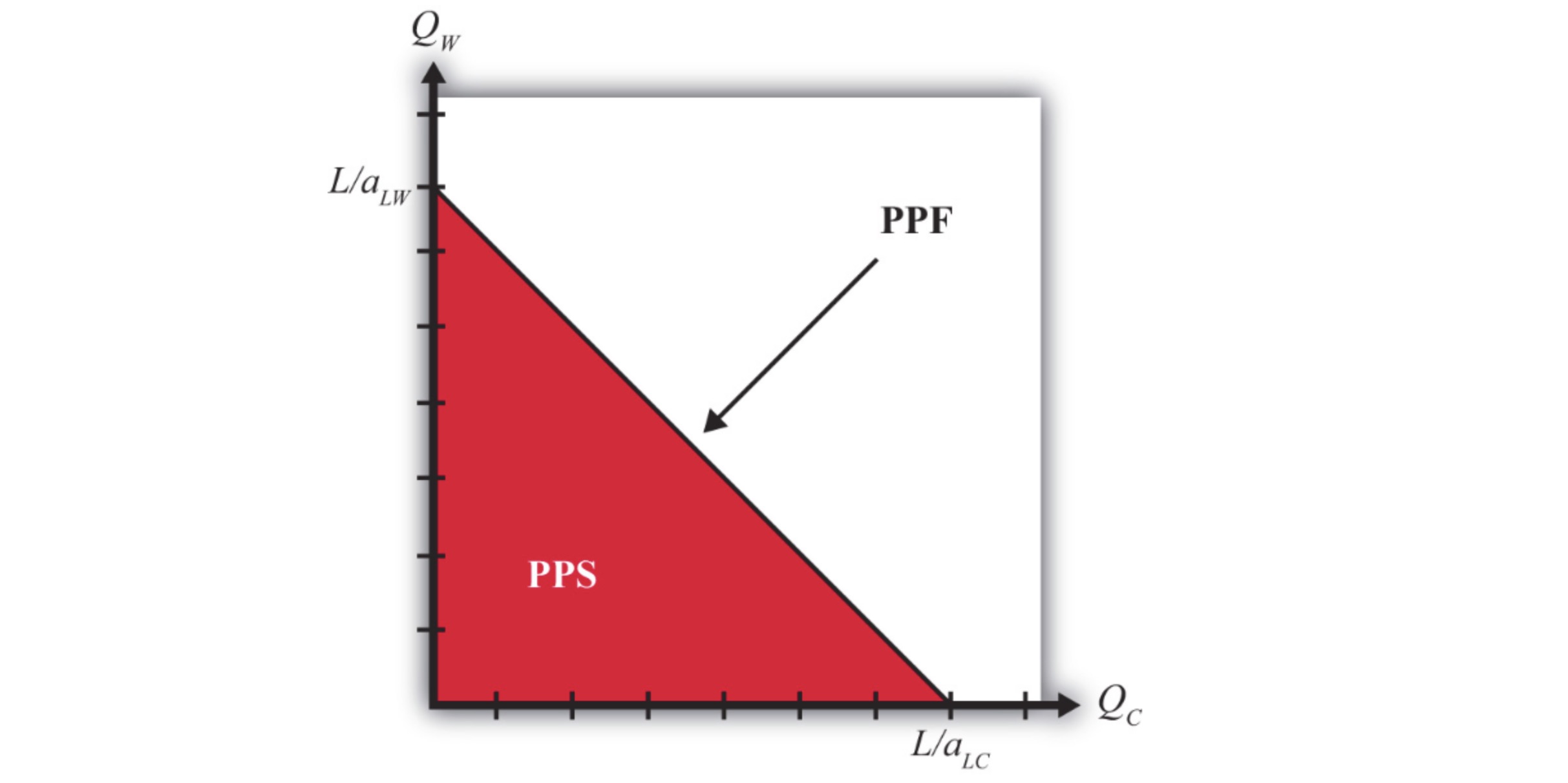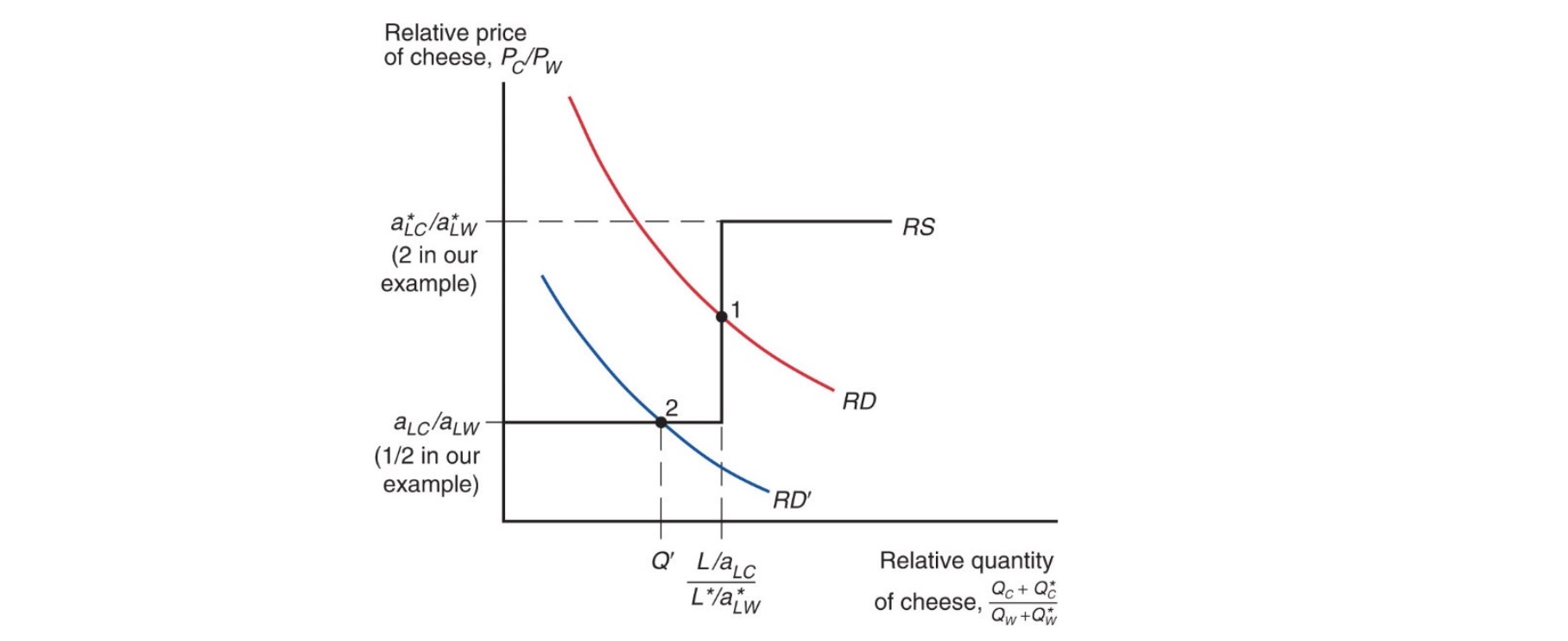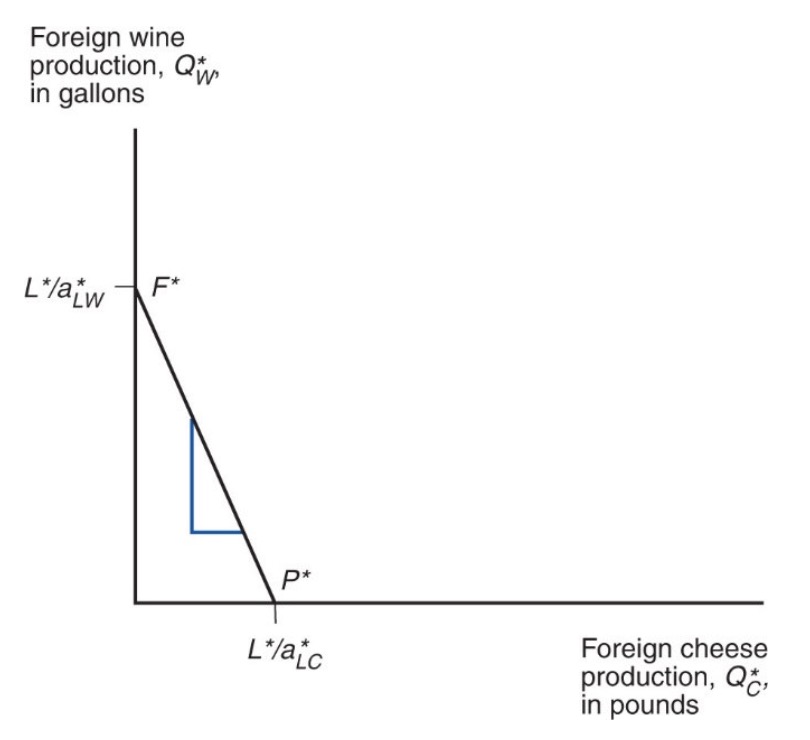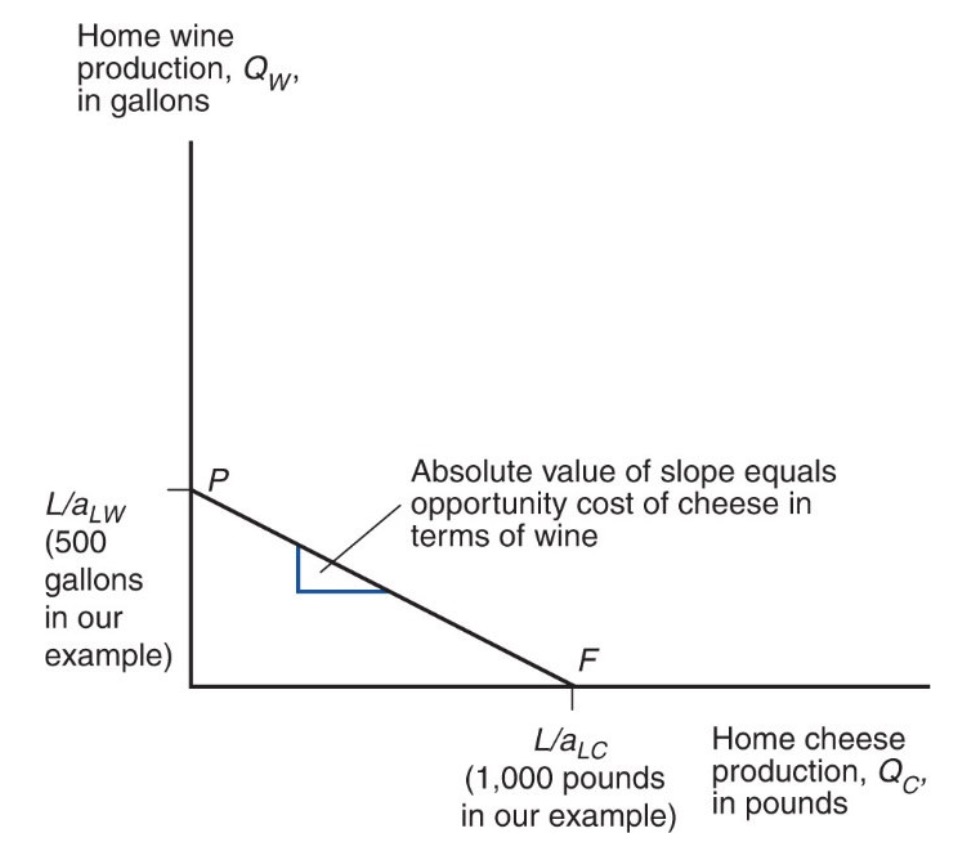27.04.2023 Labor Productivity#
why does Trade exist?
Ricardian Model#
Comparative Advantages in Productivity of Labor
Opportunity Cost: Cost of next best Alternative
Comparative Advantage: Country with lower Opportunity Costs of Product
Example:
US: same resources can produce 10mil Roses and 100k computers
Colombia: same resources \(\to\) 10mil Roses and 30k computers
Colombia = lower opportunity cost of computers => comp. Advantage in Roses
without Trade |
Roses |
Computers |
|---|---|---|
US |
5mil Roses |
15k Computers |
Colombia |
5 mil Roses |
50k Computers |
with Trade |
||
|---|---|---|
US |
10 mil Roses |
0 |
Colombia |
0 |
100 k Computers |
=> 35k Computers more
One Factor Economy#
Assumptions#
labor = only factor of Production
labor prod. varies across countries
supply of labor = constant in country
two goods: wine and cheese
competition means wages = productivity
two countries: home and foreign
Model Definition#
\(a_L\): unit labor requirement = labor needed for one product
\(a_{LC}\) = hours needed for cheese in home country
\(a_{LW}\) = same for wine
L: labor supply in home country
total Production: \(Q\)
\(Q_C\) = total pounds of cheese produced (home)
\(Q_W\) = same for wine
Production Possibilities#
= maximum amount of goods given resources (L) $\( a_{LC} \ Q_C+ a_{LW} \ Q_w \le L \)$
Maximum home Cheese: \(Q_C = \frac{L}{a_{LC}}\) with \(Q_W = 0\)
Maximum home Wine: \(Q_w = \frac{L}{a_{LW}}\)

opportunity cost: \(\frac{a_{LC}}{a_{LW}} = const.\)
Opportunity Cost of Cheese to Wine: \(Q_C = \frac{L}{a_{LC}}- \frac{a_{LW} Q_W}{a_{LC}}\)
Wages#
P = Prices: \(P_C, P_W\)
Competition: Wages = Price and Productivity
Wage of Cheese Makers: \(w_C = \frac{P_C}{a_{LC}}\)
Wage if Wine makers; \(w_w = \frac{P_W}{a_{WC}}\)
Workers choose industry with higher wage
if cheese price exceeds the Opportunity cost
\(\frac{P_C}{P_W} > \frac{a_{LC}}{a_{LW}}\)
then wage in cheese higher
then everybody into cheese industry
= specialization
if prices equal opportunity cost:
wages same everywhere
Trade#
„*“ = foreign country
absolute advantage: \(a_{LC} < a^*_{LC}\)
comparative advantage: \(\frac{a_{LC}}{a_{WC}} < \frac{a_{LC}^*}{a_{WC}^*}\)
cheese comp. advantage of home
more cheese in home: would reduce less wine production than foreign
PPF foreign |
PPF home |
|---|---|
|
|
in the absence of trade:
relative price of cheese to wine = higher in Foreign
profitable to ship cheese from Home to Foreign
Equilibrium#
Relative Supply of Cheese $\( RS = \frac{Q_C + Q_C^*}{Q_W+ Q_W^*} \)$
Sitations
relative price of cheese equals o.c $\( \frac{P_C}{P_W} = \frac{a_{LC}}{a_{WC}} < \frac{a_{LC}^*}{a_{LW}^*} \)$
workers home, indifferent
workers foreing only wine
Home workers = only cheese
foreign workers = only wine
no wine produced
only cheese
Result

Exercise II#
Foreign Trade Theory:
Free Trade |
Protectionism |
|---|---|
Dismantling of Trade Barriers |
Governmental Influence to promote industries |
Harmony |
efficient allocation |
Types of Protectionism:
Import restrictions
tariffs
trade barriers: quotas, bans, complications
Export Promotions
subsidies / dumping
Gravitational Model#
How much do people trade with each other?
A = constant term
D = Distance
Y = GDP of respective country
Implications:
big economies trade more
A can change!

